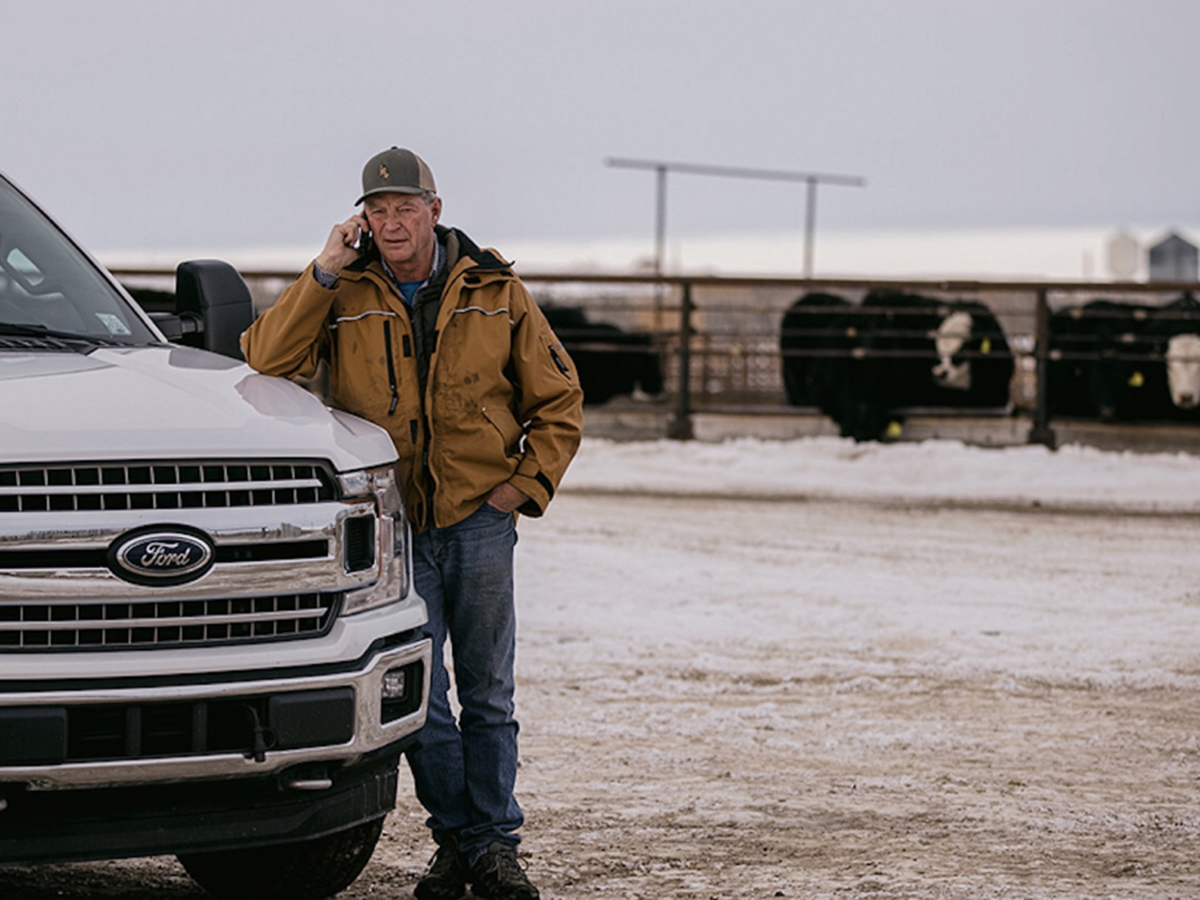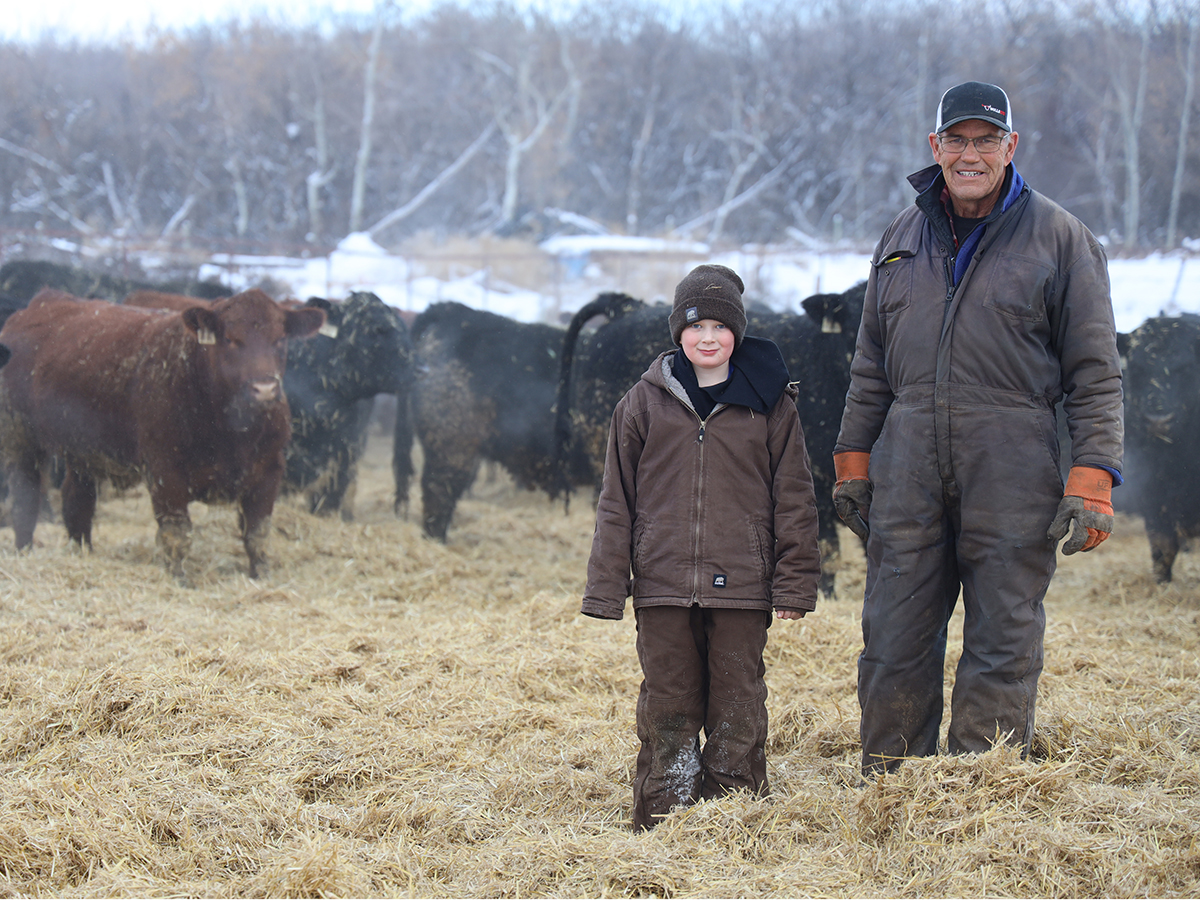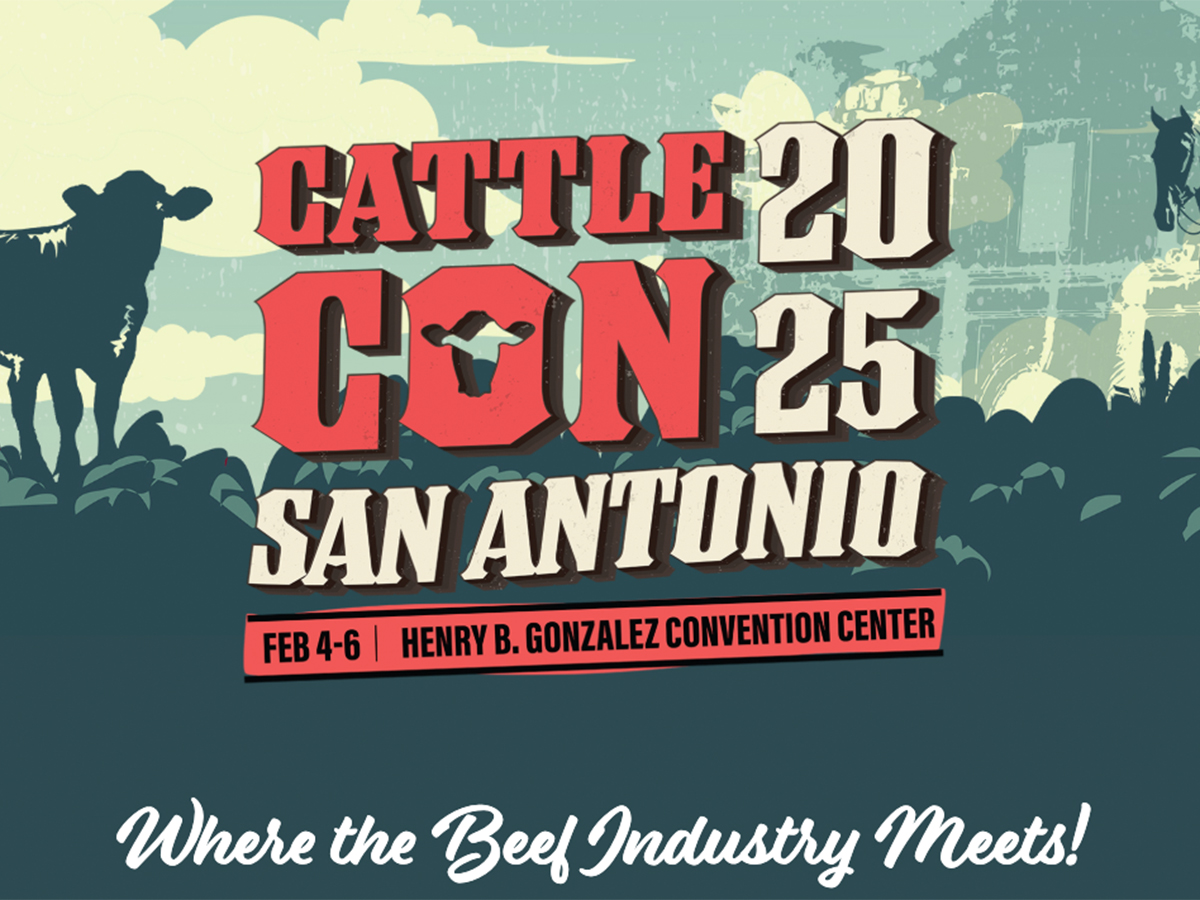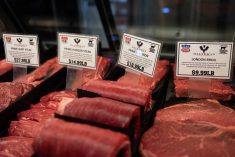As Canadian beef producers return from talks with their U.S. counterparts, the only thing that seems clear is that neither side wants tariffs
Glacier FarmMedia – Canadian producers returning from an American beef conference are no wiser about how their industry will be affected by possible American tariffs, said the past-president of the Canadian Cattle Association (CCA).
“Absolutely nobody knows what’s going to happen. We’re awfully thankful we got a 30-day reprieve, but at the end of the 30 days what happens? Absolutely nobody is making any predictions,” said Bob Lowe, also president of the Global Roundtable for Sustainable Beef.
When the National Cattlemen’s Beef Association (NCBA) CattleCon conference began February 3, U.S. President Donald Trump was hours away from slapping 25 per cent tariffs on Canadian and Mexican products entering the US. During the conference, the president announced he had paused the tariffs for 30 days. It gave the beef industry and its associations breathing room. Still, it did not relieve the uncertainty of what will happen to the industry or what producers can do to protect themselves from the fallout.
Read Also

Pakistan reopens its doors to Canadian canola
Pakistan reopens its doors to Canadian canola after a three-year hiatus.
“We export 50 per cent of our production and 70 per cent of that goes to the U.S. They are far and above our biggest market. If you put a 25 per cent tariff on that, it hurts. Well, it’s devastating, actually.”

Lowe said NCBA officials at the conference in San Antonio, Texas understood the negative effect tariffs would have on the integrated industry where cattle, feed and processed products cross the border each day.
“The NCBA agrees with trade as much as we do. Everybody says we need trade that is open and fair and science-based trade. Whether that actually gets to happen, or not, is a different story.”
Unlike previous trade disputes, there is no pressure from the American beef industry to slow Canadian beef exports. American cattle herd numbers are at historic low levels and both feedlots and packing plants need Canadian and Mexican cattle.
CCA president Nathan Phinney said despite the 30-day reprieve, officials know they must continue to work together and speak with one voice about the importance of an integrated industry to try to get the best outcome.
“The NCBA is 100 per cent supportive of our relationship and collaborating and working together as an industry. They are just dealing with a tough administration that is in power. Three weeks into the presidency and everybody is just trying to navigate how to deal with this.”
Phinney left the CattleCon conference early to return to Canada to take part in a meeting with Canadian Prime Minister Justin Trudeau about the tariffs, their impact on industries and Canada’s response.
Phinney said much of the discussion focused on removing interprovincial trade barriers and diversifying markets, but the task of harmonizing hours of transport rules, special livestock certifications, how to deal with specified risk material, plant processing rules between provinces, labelling requirements and others is not an easy task.
“It was a great conversation to have, but there isn’t an industry out there that knows how to work between provinces and federal government any more than the agriculture industry and it can be pretty daunting at times.
“We’re trying to figure out a way to cut the red tape, harmonize with the U.S. and get some of these things approved.”
Phinney said he has fielded many calls from producers looking for some kind of advice on the best way to insulate themselves from tariffs or insight into what is about to happen. With no crystal ball, he encourages producers to keep in touch and support their cattle industry associations.
Back in Canada, Lowe said there is little he as a southern Alberta rancher can do with so much uncertainty.
“We do what we do and take our lumps. You just don’t quit. We’ve had things happen before and we made it through BSE. I can’t imagine anything worse than that. You carry on and do the best you can to cushion the blow.”
Cattle producer and former CCA president Dave Solverson, also at the NCBA conference, said no one had a clear vision if the president would go ahead with tariffs in March, end the idea or add more tariff extensions.
“There is a tremendous amount of uncertainty.”

Solverson said NCBA officials he talked to understand the negative effect of a 25 per cent tariff on the industry, but few of the 10,000 people at the conference were aware of the tariffs, or how it could affect their cattle industry.
“A lot of them are not as informed as we are.”
Solverson said during discussions with packers, including Canada’s main packers JBS and Cargill, there were no clear answers on how the tariffs would affect American and Canadian cattle in any country. Unlike the previous BSE border closures and trade disputes, cattle herd numbers are at an all-time low and Americans need Canadian cattle.
Trump’s 30-day stay on tariffs is scheduled to end the day before Scott Severtson’s annual bull sale on March 3. Potential and previous American bull buyers may avoid his sale, but Severtson is more concerned about the overall beef industry across Canada than his single sale.
“It’s quite concerning. Hopefully, it will go away. Hopefully, Trump will come to his senses because the industry is so integrated between Canada and the US,” said Severtson, of Innisfail, Alta.
About $2.5 billion of goods are traded between the two countries each day and the influence of tariffs will be felt across all industries, not just livestock, he said.
“It’s just mind-boggling the amount of trade that goes back and forth across the border. It seems funny to me that he would want to mess with that trade. So hopefully, everybody comes to their senses. If it does come, it’s really going to impact our industry,” said Severtson, who believes there is little he can do as a producer to shield himself from potential tariffs.
Solverson said if tariffs are put in place and fewer Canadian cattle get exported to the U.S. and more stay in Canada, he has faith the Canadian consumer will eat more Canadian beef just as they did when borders were closed to Canadian beef after BSE was found in a Canadian cow.
“Our consumers have proved in the past they have always rallied behind us. Canada was the first country in the world where there was an increase in per capita consumption of beef after a BSE scare.”















